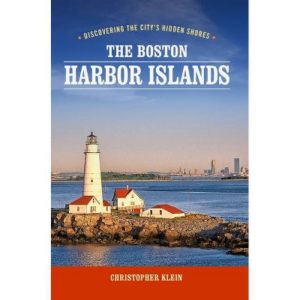Boston Harbor Islands Among 11 Most Endangered Places in U.S.
The National Trust for Historic Preservation today named the Boston Harbor Islands among the 11 most endangered historic places in the U.S.
 As I write about in my book The Boston Harbor Islands: Discovering the City’s Hidden Shores, these 34 islands have had a front-row seat to some of the seminal moments in American history: A tea party in 1773, which rippled through the harbor and grew into waves of freedom washing over America. The departure of the last British troops driven out by a band of colonists in 1776. The arrival of the first “coffin ships” carrying Irish famine victims in Black ’47. The launch of Donald McKay’s fleet clippers, such as the Flying Cloud, that would rule the seas in the 1850s. And the return of the celebrated 54th Massachusetts Volunteer Infantry Regiment from bloody Civil War battlefields.
As I write about in my book The Boston Harbor Islands: Discovering the City’s Hidden Shores, these 34 islands have had a front-row seat to some of the seminal moments in American history: A tea party in 1773, which rippled through the harbor and grew into waves of freedom washing over America. The departure of the last British troops driven out by a band of colonists in 1776. The arrival of the first “coffin ships” carrying Irish famine victims in Black ’47. The launch of Donald McKay’s fleet clippers, such as the Flying Cloud, that would rule the seas in the 1850s. And the return of the celebrated 54th Massachusetts Volunteer Infantry Regiment from bloody Civil War battlefields.The Boston Harbor Islands are home to the country’s oldest light station, Civil War era forts, quarantine station ruins, graveyards, and artifacts from the first people to live in the Boston area thousands of years ago.
These islands are endangered from rising sea levels and the decimation of their natural protection from nature’s fury. Think the harbor islands won’t just disappear? Well, one already has. And it’s a cautionary tale.
When John Winthrop and his fellow Puritans sailed into Boston Harbor in 1630, Nixes Mate was a 12-acre island. After city residents harvested stones from its shores and sold them as ballast, the island’s natural protection was gone. Waves and wind whittled away the island until it melted into the harbor. By 1805, all that remained were shoals visible at low tide. A pyramidal beacon now marks the remains of Nixes Mate as a warning to mariners.
Let’s make sure that history doesn’t repeat itself.